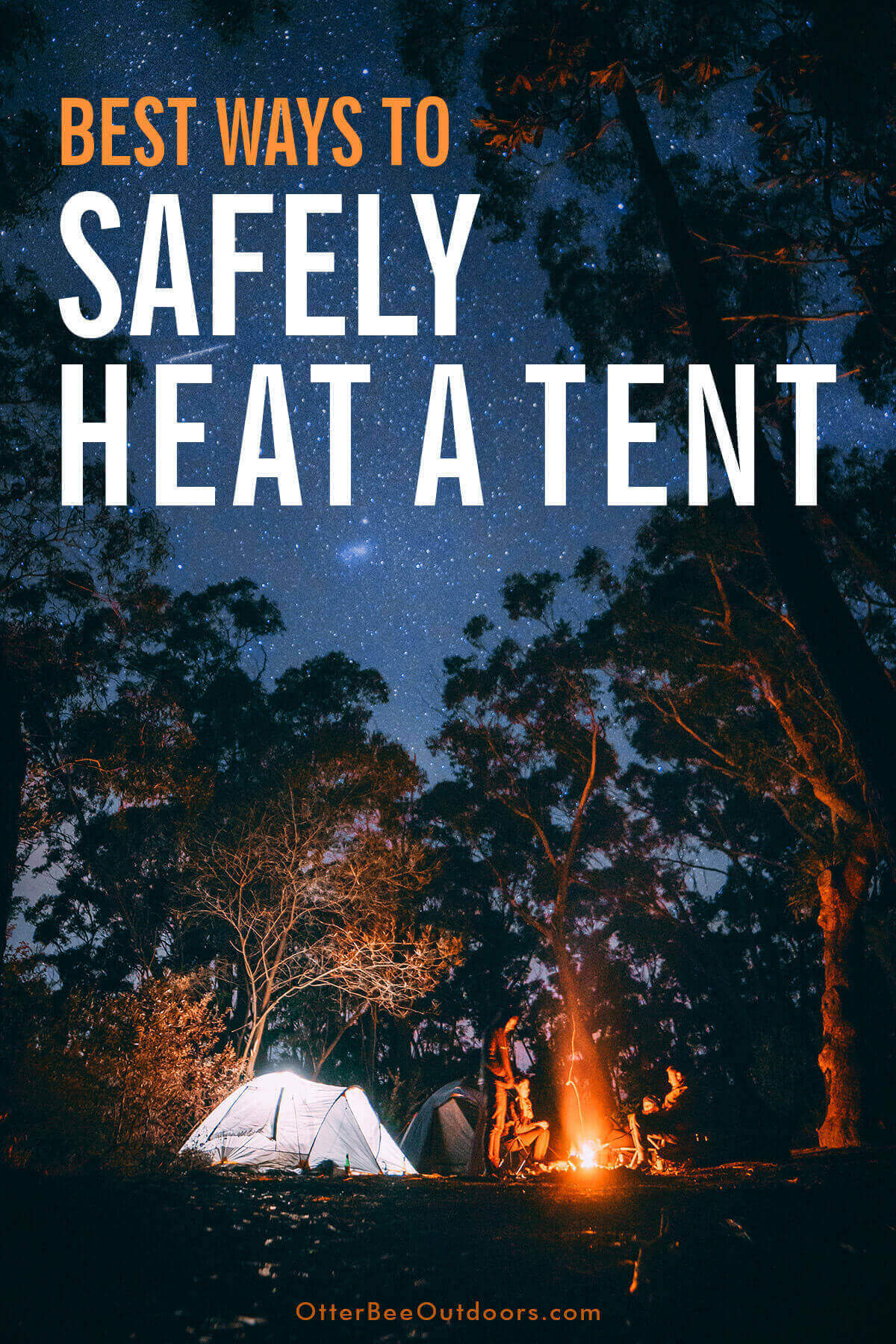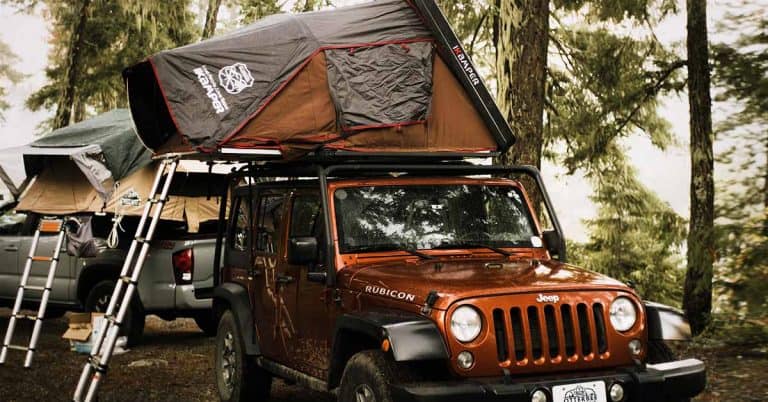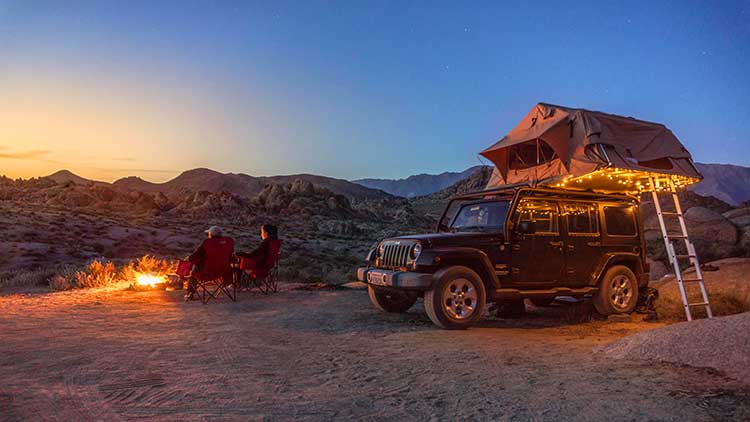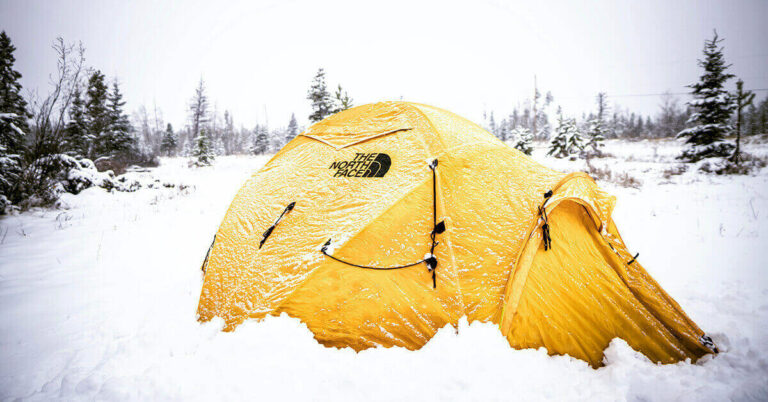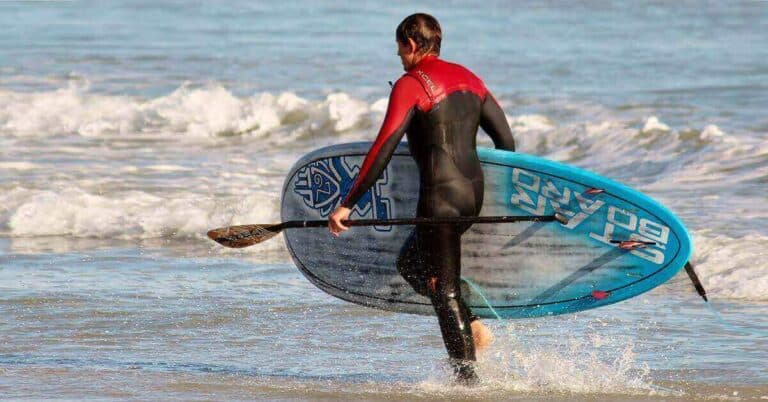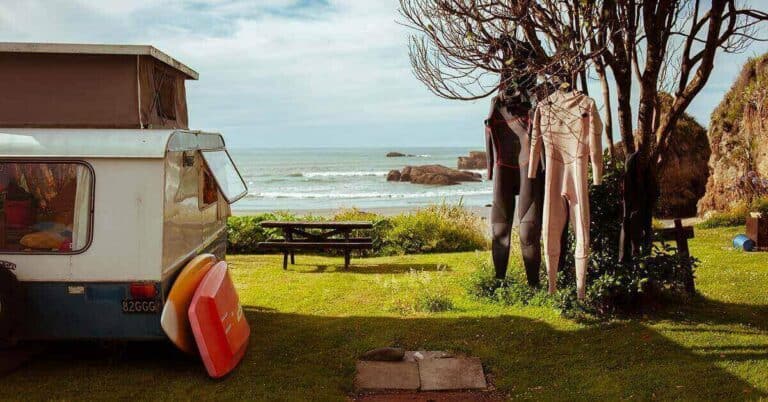Disclosure: I am compensated for purchases made through some links on this site. Click for details.
When camping, staying warm is essential for your comfort and safety. Knowing how to safely heat a tent can make the difference between an enjoyable experience and one that’s cold and miserable.
Heating a tent comes with certain risks, so it’s important to understand what not to use when heating your tent before deciding on a heat source.
Let’s explore the basics of heating for tents and some common heat sources such as propane heaters, diesel heaters, electric heaters, electric blankets, wood-burning tent stoves, and campfires along with alternative methods like heated stones, hot water bottles, and more.
We’ll also discuss safety considerations in order to ensure everyone stays safe while enjoying their time outdoors!
Tent Heating Basics
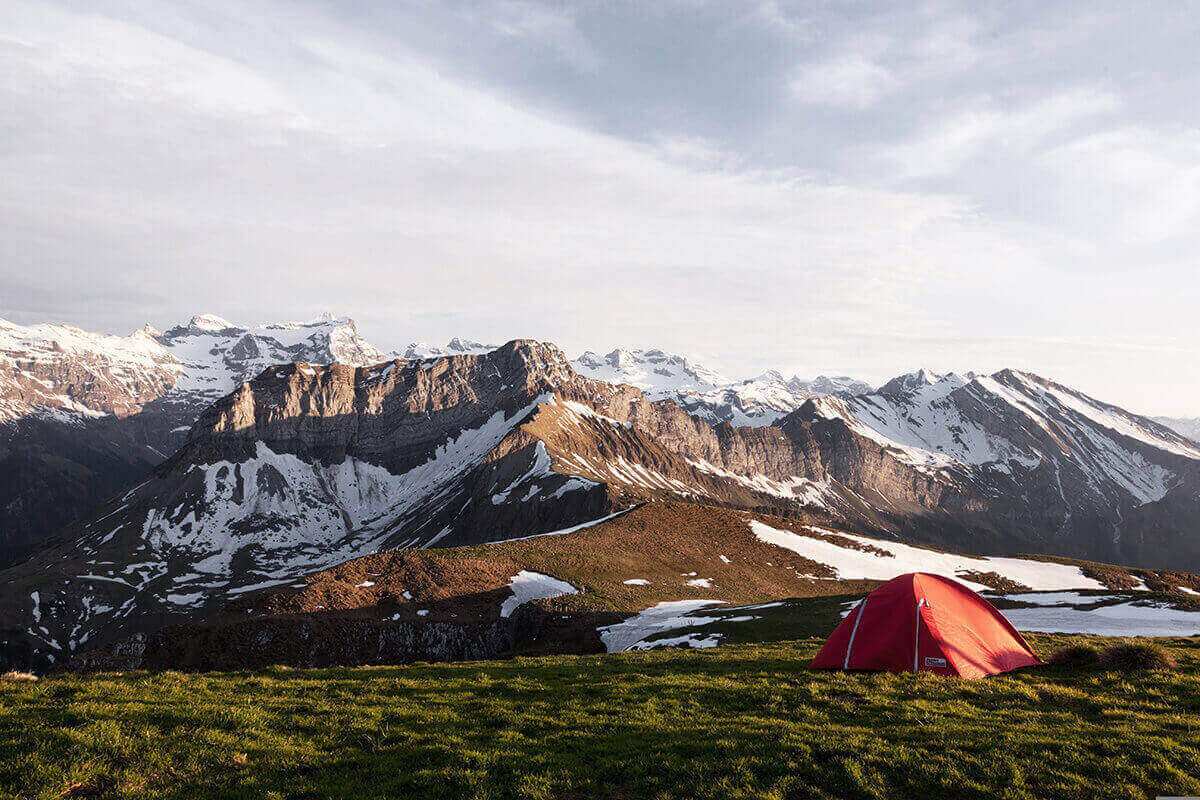
Tent heating is especially important during the colder months. It can make a huge difference in comfort and safety when camping. Knowing how to properly heat your tent can help ensure that you have a warm and cozy place to sleep at night.
Why Heat Your Tent?
When temperatures drop, it’s important to keep your tent warm so that you don’t wake up cold or with hypothermia or frostbite.
Cold weather tents are designed for insulation but they still need some extra warmth from inside the tent itself in order to be comfortable enough for sleeping.
Keeping your tent heated helps prevent condensation from forming on the walls of the tent which can lead to mold growth over time if not addressed quickly enough.
What Options Are Best For Heating A Tent?
The best option for heating a tent depends on what type of fuel source you plan on using and how much space you have available inside your tent.
Some popular options include portable heaters, electric blankets, wood stoves, and campfires (if allowed).
Each has its own advantages and disadvantages so we will look at each option to determine which one’s right for you based on cost, convenience, size/weight restrictions, etc.
How To Safely Heat Your Tent
It is important to understand the basics of tent heating before attempting to use any type of heat source in a tent. With proper safety considerations, you can enjoy the warmth and comfort that tent heating provides while camping. Let’s look further into safety…
Safety Considerations for Heating a Tent
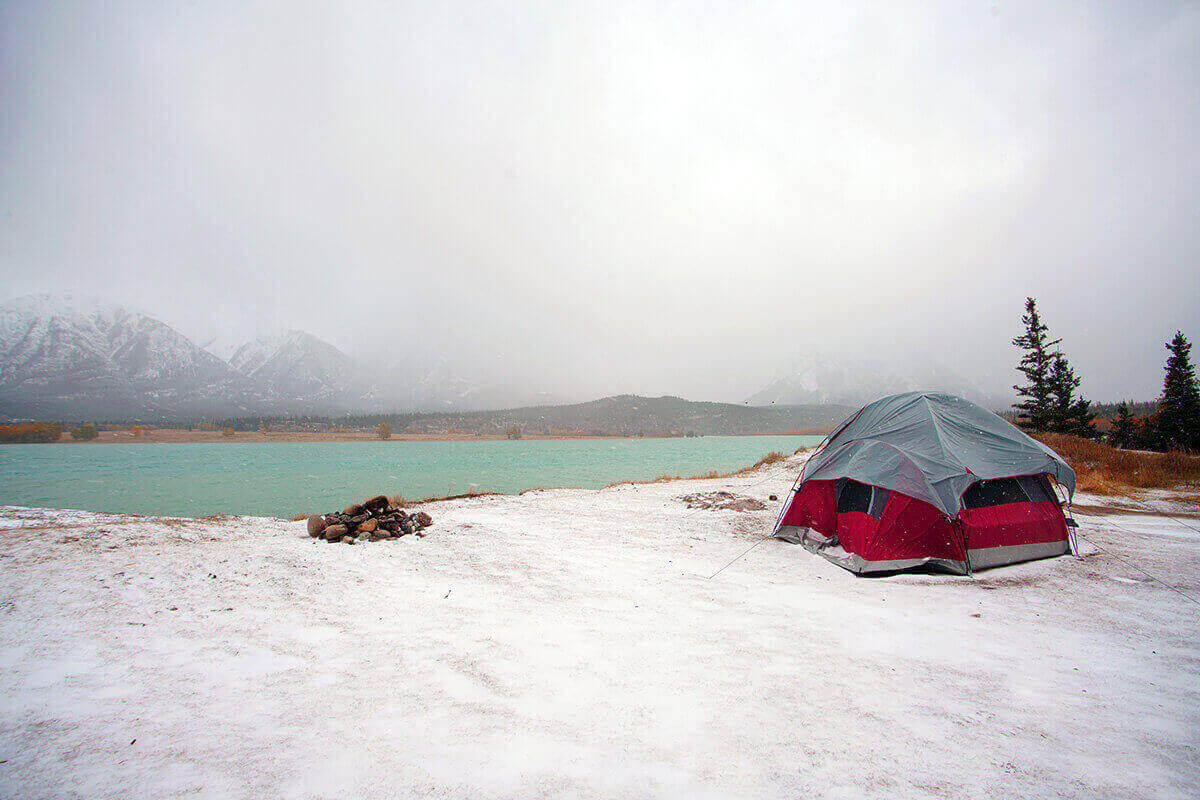
When it comes to tent heating, safety should always be your top priority. Check out these common safety considerations…
- Proper ventilation is essential when using certain heat sources in a tent. Without proper ventilation, carbon monoxide can build up and cause serious health issues or even death.
- If your tent heater doesn’t have a CO2 monitor, consider investing in one for added safety. Not sure if your propane or diesel heater has a CO2 monitor? Check your tent heater manual.
- Make sure that the area around a heater is clear of combustible materials such as blankets, pillows, and clothing.
- Keep all flammable liquids away from heat sources.
- Never leave a heater unattended while it’s on.
- Fire safety should also be considered when heating a tent with an open flame such as a campfire. Always use caution when lighting these types of heat sources and make sure that they are placed far enough away from the walls of the tent so that sparks won’t ignite them. Never leave an open flame unattended at your campsite for any length of time and make sure to extinguish it completely before leaving the area or going to sleep for the night.
- Electric heaters and blankets are also options for keeping warm in cold weather but they too must be used with caution due to potential fire hazards if left on too long or used improperly.
- Electric heaters and blankets should only be plugged into outlets specifically designed for outdoor use since regular indoor outlets may not have sufficient protection against moisture damage caused by rain or snow seeping through seams in the tent.
- Additionally, electric blankets must never come into contact with water while they are plugged in as this could result in electrocution if someone were to touch them while wet.
- Heated stones can provide warmth without needing electricity but care must still be taken when using them inside tents due to their potential risk of causing damage to your tent or gear. Additionally, heated stones should never come into direct contact with skin as this could lead to burns.
- Finally, consider keeping a fire extinguisher nearby. They are invaluable when needed.
It is important to be aware of safety considerations when using any heat source in a tent, and it is essential to understand the potential risks associated with each one. Next, we will discuss different types of heat sources that can be used to safely heat a tent.
Propane Heaters
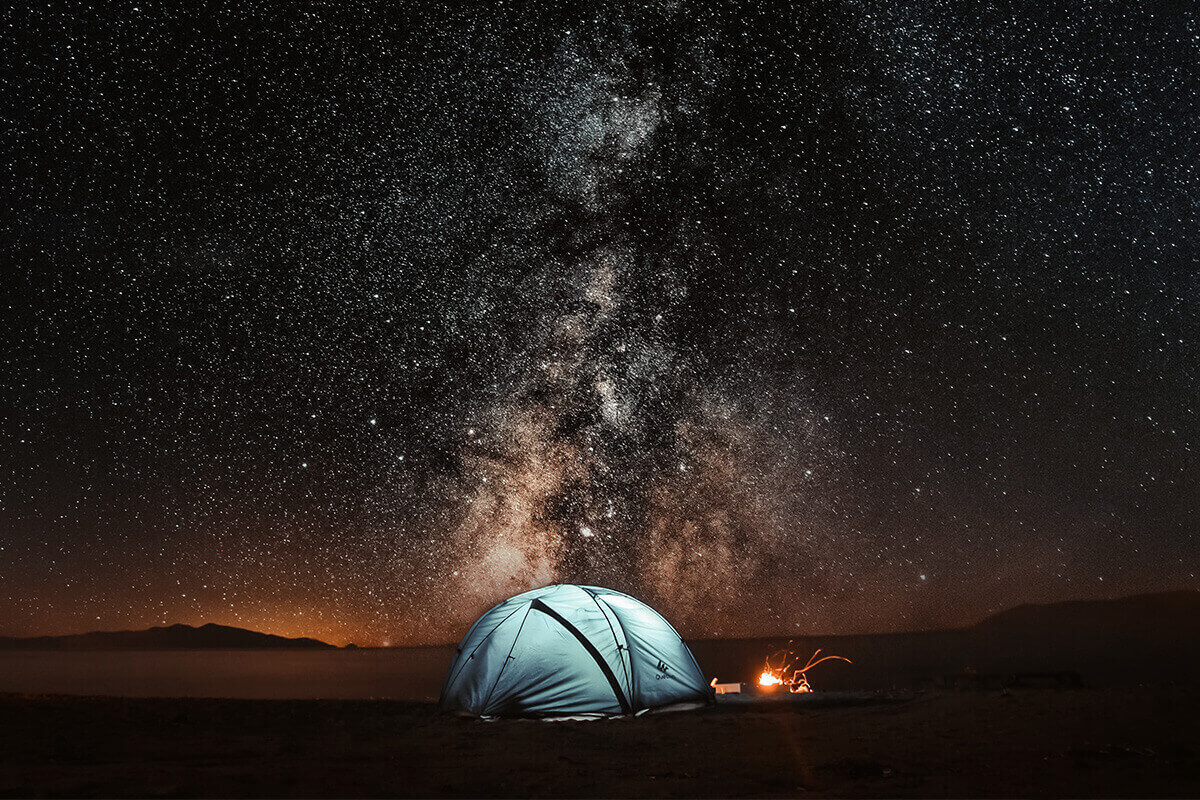
Propane heaters are the most common type of heater used when camping and are a great way to keep your tent warm and cozy during camping trips. They offer an efficient, cost-effective heating solution that can be used both indoors and outdoors.
These heaters use propane gas to generate warmth inside the tent or shelter. The size of the propane bottle will determine how long it will last before needing to be refilled. Propane tanks come in various sizes from 1 pound up to 20 pounds depending on your needs. Some propane tent heaters even have adjustable settings so you can control how much warmth they produce at any given time.
There are, however, some safety considerations when using propane heaters in tents.
When selecting a propane heater for use in a tent, it is important to make sure the model you choose is designed specifically for indoor use. Some models may not have adequate ventilation or safety features needed for safe operation inside a confined space like a tent. It is also important to check the manufacturer’s instructions before using any type of propane heater inside your tent.
It is essential to ensure proper ventilation when operating any type of propane heater in your tent. This means having at least one window open slightly while the unit is running.
You should also ensure that no combustible materials such as blankets or clothing are near the unit while it’s running.
Additionally, never leave the unit unattended while it’s running, and always turn off all gas valves after each use – even if you plan on using it again soon.
Finally, be aware that carbon monoxide poisoning can occur with improper usage of any fuel-burning device including propane heaters.
Propane heaters are a great way to keep warm in your tent while camping, but diesel heaters offer an even more efficient and cost-effective solution. Let’s take a look at the benefits of using diesel heaters for outdoor heating.
Diesel Heaters
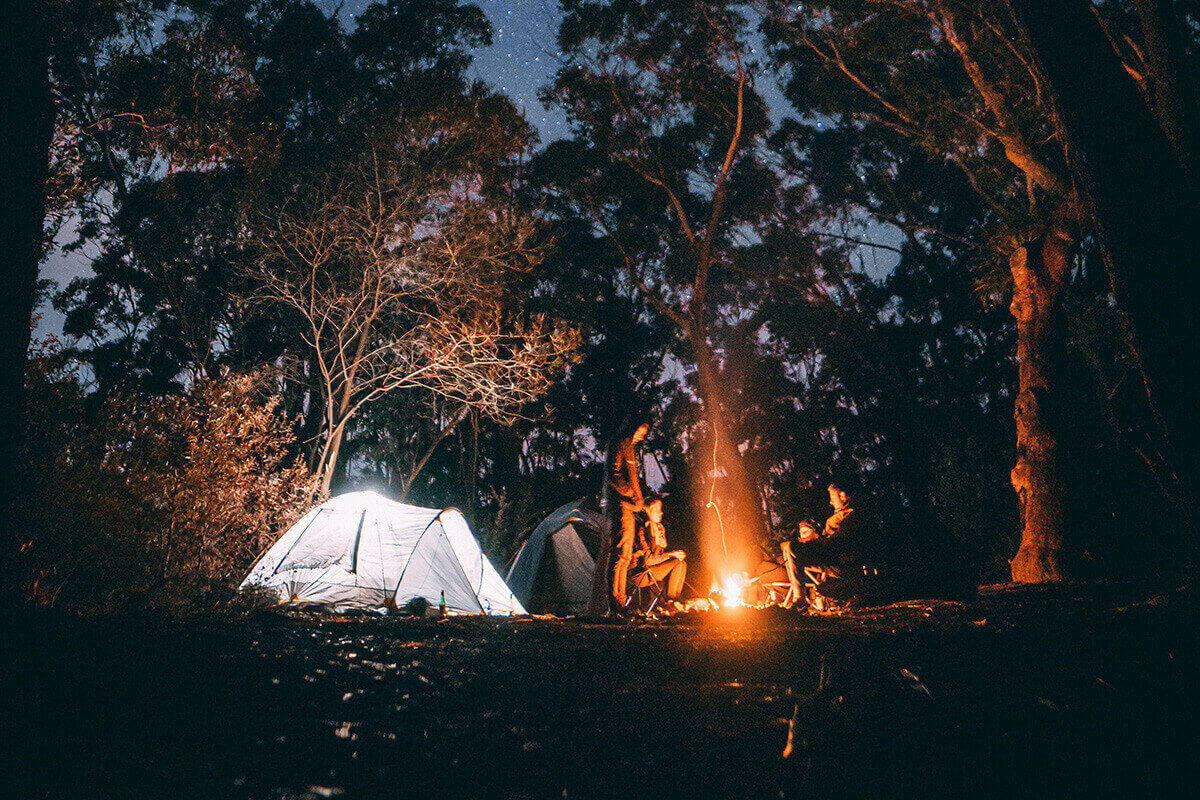
Diesel heaters are a great way to keep warm in your tent while camping. They provide an efficient and reliable source of heat, but it’s important to use them safely. Diesel fuel is highly flammable, so you should always take the necessary precautions when using these types of heaters.
When purchasing a diesel heater for your tent, make sure that it has been designed specifically for indoor use. Many outdoor diesel heaters are not suitable for enclosed spaces like tents due to their high emissions and potential fire hazard.
It’s also important to check the manufacturer’s instructions before using any type of heater inside your tent or other enclosed space as they may have specific safety requirements or warnings about carbon monoxide poisoning.
It’s also essential that you ensure there is adequate ventilation when using a diesel heater in your tent; this will help reduce the risk of carbon monoxide buildup which can be fatal if inhaled in large quantities over time. Make sure that all windows and doors remain open while running the heater and only run it at low settings unless absolutely necessary as higher temperatures can increase the risk of fire or smoke inhalation from incomplete combustion products such as carbon dioxide and nitrogen oxide gases.
Finally, never leave a diesel heater unattended while running inside your tent. Always turn off the device before leaving it alone or going to sleep at night so that no one is poisoned by its fumes. Accidental or intentional inhalation of these fumes can be dangerous and should be avoided.
Diesel heaters provide a reliable and efficient source of warmth for tents, making them an ideal choice for outdoor enthusiasts. Electric heaters are another option that can be used to keep your tent warm.
Electric Heaters
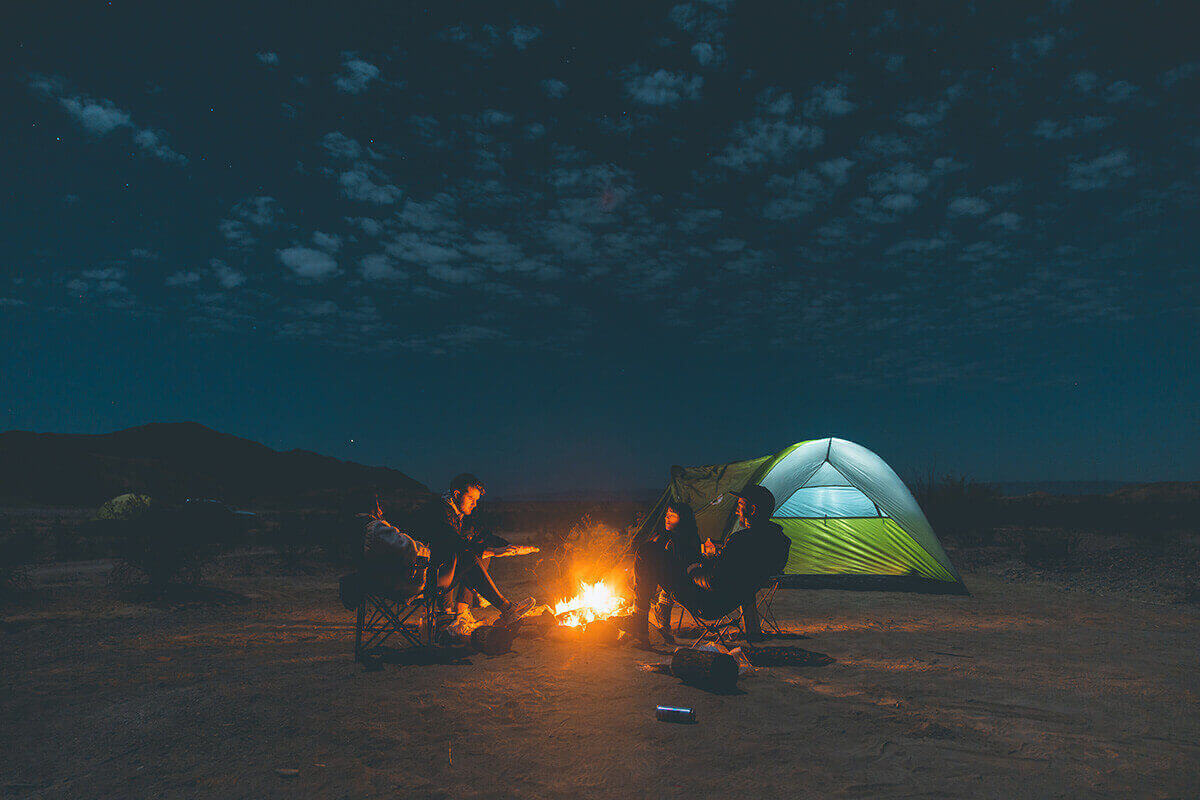
Electric heaters can be plugged into an outlet or powered by batteries and are a great way to keep your tent warm and cozy on cold nights. They come in many shapes, sizes, and power levels so you can find the perfect heater for your needs.
When choosing an electric heater for use in a tent, it is important to consider safety first. Look for models that have been tested and certified by Underwriters Laboratories (UL) or other recognized testing organizations. This will ensure that the product meets all necessary safety standards and has been designed with proper ventilation requirements in mind. Additionally, make sure to read all instructions carefully before using any type of electric heater indoors.
The most common types of electric heaters used in tents are convection-style models which rely on air circulation to disperse heat throughout the space evenly without creating hot spots or drafts near walls.
These units typically feature adjustable thermostats which allow you to set the desired temperature level as well as fan speeds which help control how quickly the unit heats up its surroundings.
Some models also offer built-in timers so you can program them to turn off after a certain amount of time has passed – this is especially useful if you plan on leaving your tent unattended after camping overnight.
Finally, some portable electric stoves also double as efficient space heaters when placed inside a tent. Just make sure to keep them away from flammable materials such as sleeping bags or clothing.
No matter what type of electric heater you choose, always remember that safety should be your top priority when using one inside a tent. Never leave it running unattended and always unplug it before going out into nature.
Electric heaters are a great way to stay warm in your tent, but if you want more portability and convenience, electric blankets are the way to go.
Electric Blankets
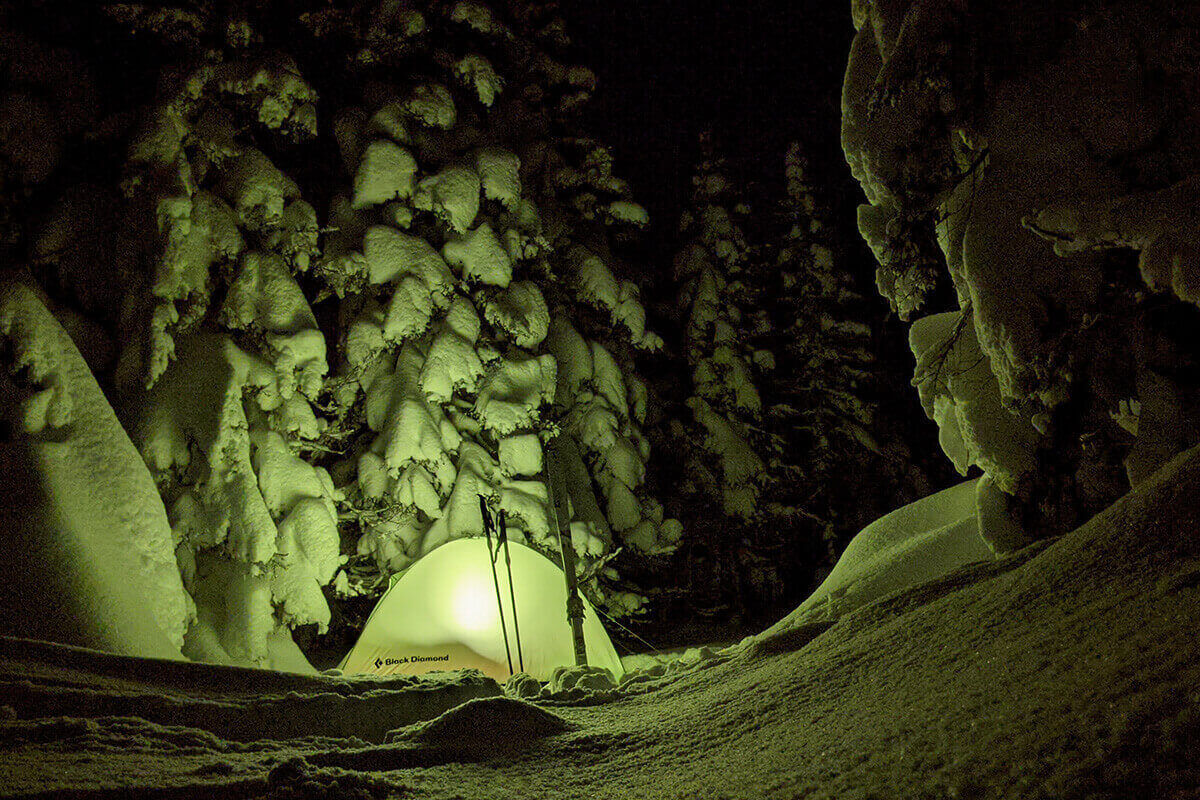
Electric blankets are a great way to provide warmth in a tent. They can be plugged into an outlet or powered by batteries, making them easy to use and transport. Electric blankets are lightweight and compact, so they won’t take up much space in your pack. Plus, they don’t require any fuel like propane or diesel heaters do.
One of the biggest advantages of electric blankets is that they produce no smoke or fumes, which makes them ideal for indoor use as well as outdoor camping trips.
Additionally, electric blankets generate very little noise compared to other heating sources such as propane heaters and campfires. This makes them perfect for those who want some extra warmth without disturbing their neighbors or wildlife nearby.
However, there are also some drawbacks to using electric blankets when camping…
For one thing, you need access to electricity in order to power the blanket, either from an external source such as a generator or from batteries if you’re off-grid camping, so it’s not always feasible depending on where you’re going and what type of campsite you have access to.
Additionally, electric blankets can be expensive compared with other forms of heating such as campfires and heated stones which require no additional energy source.
Benefits of Heated Blankets
Heated blankets offer many benefits over traditional methods of keeping warm while camping or hiking. These include the following:
- Portability: Heated blankets are lightweight and compact, making them ideal for taking on trips where space is limited.
- Safety: Unlike open flames or other heating sources, heated blankets do not pose any risk of fire or carbon monoxide poisoning when used properly.
- Comfort: The warmth provided by these devices can be adjusted to suit individual needs, providing a more comfortable sleeping experience than with traditional bedding materials such as wool or down.
- Durability: Most heated blankets are designed to last for years with proper care, so they can be used again without needing replacement each time you go camping or hiking.
How To Use A Heated Blanket Safely?
When using a heated blanket it’s important to follow all safety instructions included with the product carefully in order to avoid potential hazards such as overheating due to improper use.
Here are some tips for using these products safely :
- Always make sure the device is turned off when not in use.
- Never leave children unattended around any type of electrical device including a heated blanket.
- Do not place anything flammable near the device while it is operating.
- Make sure cords from electric devices remain clear from walkways where people may trip over them.
- Never cover yourself completely under any type of blanket as this could cause suffocation.
Electric blankets are a great way to keep warm in your tent, but they aren’t the only option. The next section will discuss how wood-burning stoves can provide an additional source of warmth and comfort while camping.
Wood-Burning Tent Stoves
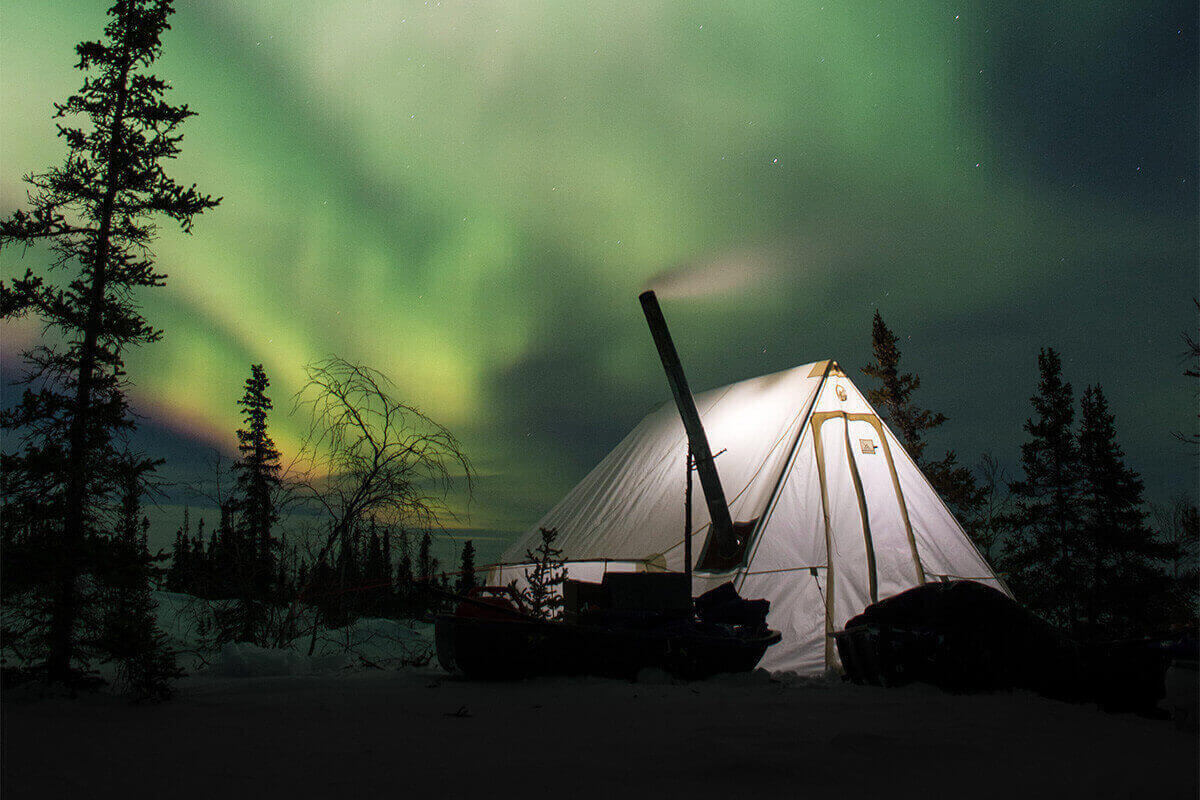
Wood-burning tent stoves are a great way to heat your tent while camping. They provide warmth and comfort in cold weather, as well as the ability to cook meals inside your tent. They are more commonly used in canvas tents like those from White Duck Outdoors.
However, there are some important safety considerations when using wood-burning stoves that should be taken into account before lighting one up.
Fuel Sources for Wood-Burning Tent Stove
The most common fuel sources for wood-burning stoves include dry hardwood logs, charcoal briquettes, or even pellets made from sawdust or other organic material.
The type of fuel you choose will depend on how much heat you need and how long you plan on using your stove each night.
If possible try to avoid softwoods like pine which can produce more smoke than hardwoods like oak or hickory when burned in a small space like a tent.
Advantages of Wood-Burning Tent Stoves
- Wood-burning tent stoves have several advantages over other forms of heating for tents. For starters, they don’t require any electricity or gas and can be used anywhere with access to firewood.
- Additionally, they create an even heat distribution throughout the entire area of the tent due to their design which is beneficial during colder nights outdoors.
- Finally, they offer a more authentic outdoor experience than other forms of heating since you get to enjoy the smell and crackle of a real campfire from within your own shelter!
Disadvantages of Wood-Burning Tent Stoves
- The main disadvantage associated with wood-burning tent stoves is that it requires extra caution when setting them up and using them correctly in order to avoid potential accidents such as fires or carbon monoxide poisoning from improper ventilation.
- Wet kindling in bad weather can present a challenge.
- Additionally, these types of stoves may not be suitable for use in all climates. If temperatures are too high outside or if there isn’t enough air circulation around the stove itself smoke inhalation can be a concern.
- Furthermore, wood-burning tents typically take longer than electric ones do to warm up so patience is key when waiting for them to become hot enough!
Safety Considerations When Using Wood-Burning Tent Stove
When using a wood-burning stove inside your tent, it’s important to ensure proper ventilation by opening windows or vents near the stove so smoke doesn’t build up inside the space. This will also help reduce the chance of carbon monoxide poisoning which can occur if too much smoke accumulates in an enclosed environment like a tent.
It’s also essential that you keep combustible materials away from any open flames at all times – including sleeping bags – since sparks could easily ignite these items causing serious injury or death!
Finally, never leave the fire unattended, and always have a fire extinguisher nearby.
Wood-Burning Tent Stove Installation & Maintenance:
Before installing your wood-burning tent stove make sure that it has been properly assembled according to manufacturer instructions and double-check all connections before lighting the stove.
Once installed inspect regularly for any signs of wear or damage such as loose screws, missing parts, etc., as these could lead to potential hazards down the line if left unchecked.
Additionally, make sure that all components remain clean by brushing off ash buildup after each use so they don’t become clogged with debris over time which could reduce efficiency levels significantly.
Do you plan to have a campfire while camping? Let’s look at how campfires can warm your tent.
Campfires
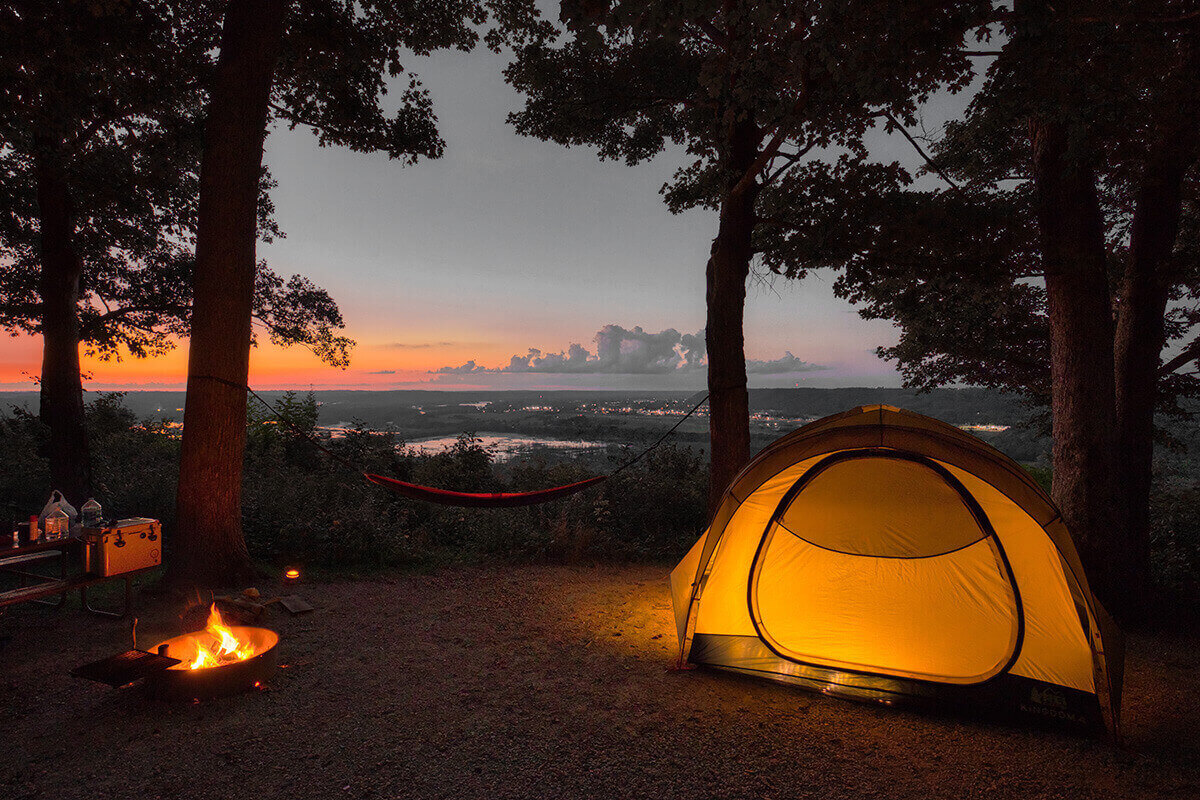
Campfires are an excellent way not only for providing light but also to generate some additional warmth for your tent or shelter if needed during colder nights outdoors, especially when combined with other forms of insulation like sleeping bags, blankets, etc.
When building a campfire make sure that there is plenty of clearance between the fire pit and any nearby tents or shelters so that sparks do not accidentally ignite anything else around them while still being close enough so that its light and radiant warmth can reach those inside who need it most during chilly evenings.
When setting up the fire pit, make sure you have cleared away any flammable material from the area around your campsite. This includes sticks, leaves, and grasses that could easily catch fire if exposed to an open flame.
Additionally, be aware of local regulations regarding campfire use as some areas may restrict their use during certain times of the year due to dry conditions or other reasons.
Once you’ve chosen a safe spot for your campfire and made sure it is allowed by local regulations then you can begin building the fire itself.
Start with small pieces of kindling such as twigs and branches that will help ignite larger logs once they get going. Be sure not to overload the firepit with too much wood at once as this could cause smoke inhalation or even put out the flames completely if there isn’t enough oxygen getting to them.
When lighting your campfire always use matches or lighters and never use gasoline as an accelerant, which can be dangerous if spilled on hot coals or embers and cause flare-ups.
At minimum, all adults at your campsite know how to properly extinguish fires in case something unexpected happens. Fire safety is also important for children to know as well.
For more on campfire safety, download the free tip sheet on campfire safety from the National Fire Protection Association.
Campfires provide a great way to keep warm and cook food while camping, but heated stones can also be used as an alternative source of heat.
Heated Stones
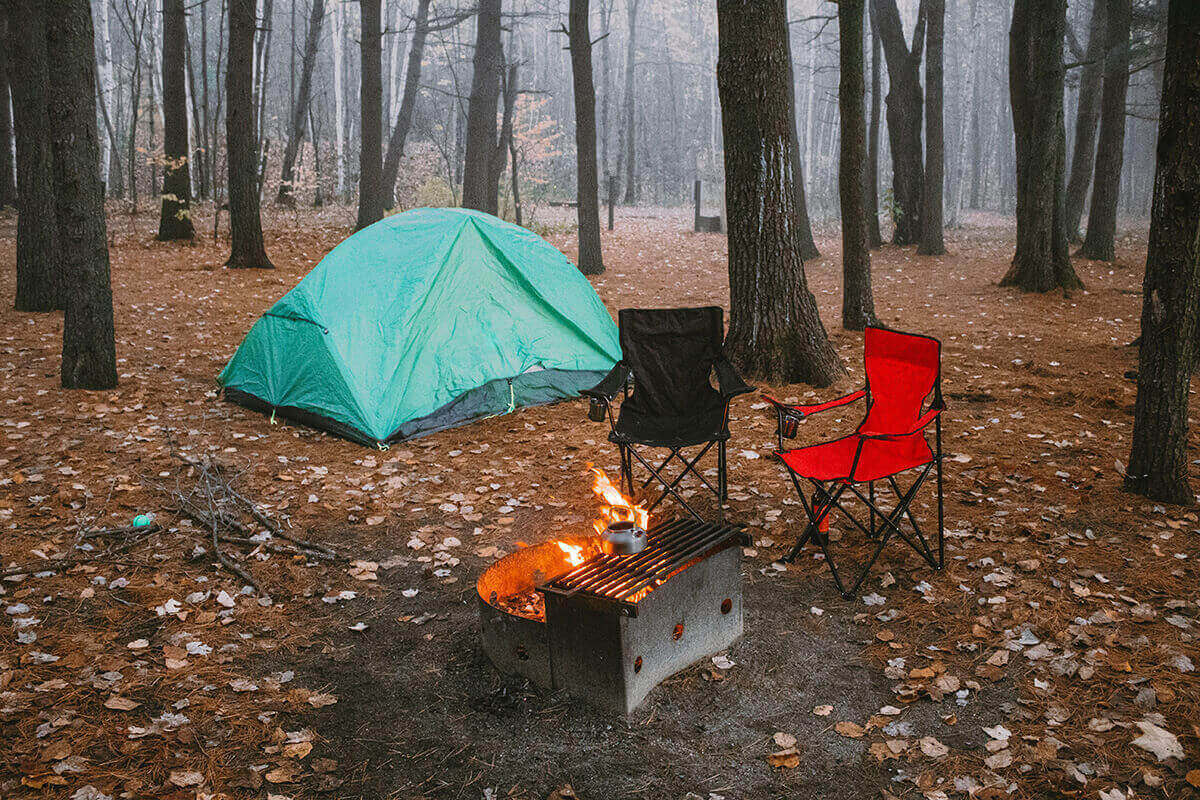
Heated stones have been used for centuries to provide warmth in tents and dwellings. The process is simple: heat a stone until it’s hot, wrap it in cloth or place it inside a container like a cast iron dutch oven, and bring the heated stone into your tent. This will help keep you warm during cold nights outdoors.
When using heated stones as a source of heat, safety should be your top priority. Make sure that the rocks are not too hot before bringing them into the tent; they should be just warm enough to provide comfort without burning anyone who touches them.
Before heating up any rocks, check with local authorities about fire regulations in your area. Some places may prohibit open fires altogether while others may require special permits or conditions for campfires.
Additionally, use natural materials such as wood or charcoal to heat up the stones. Avoid using petroleum-based fuels like gasoline or kerosene due to their toxic fumes and the dangers of accelerant use.
How to safely heat rocks to warm your tent:
- Gather several large flat stones from around your campsite. Avoid riverbeds due to potential water contamination.
- Either place the rocks on an open fire and let them cook over a low-medium flame for 20+ minutes or my favorite, place them close to but not over the fire.
- Wrap each rock in thick fabric such as a wool blanket or towel. This helps protect against burns.
- Once wrapped securely, carefully place them around the interior perimeter of the tent. This will create pockets of warmth throughout the space.
Heated stones can be a great way to provide warmth and comfort while camping, but there are also other alternatives that can help keep your tent warm. Let’s explore some of these options in the next section.
Alternatives to Heating Tents
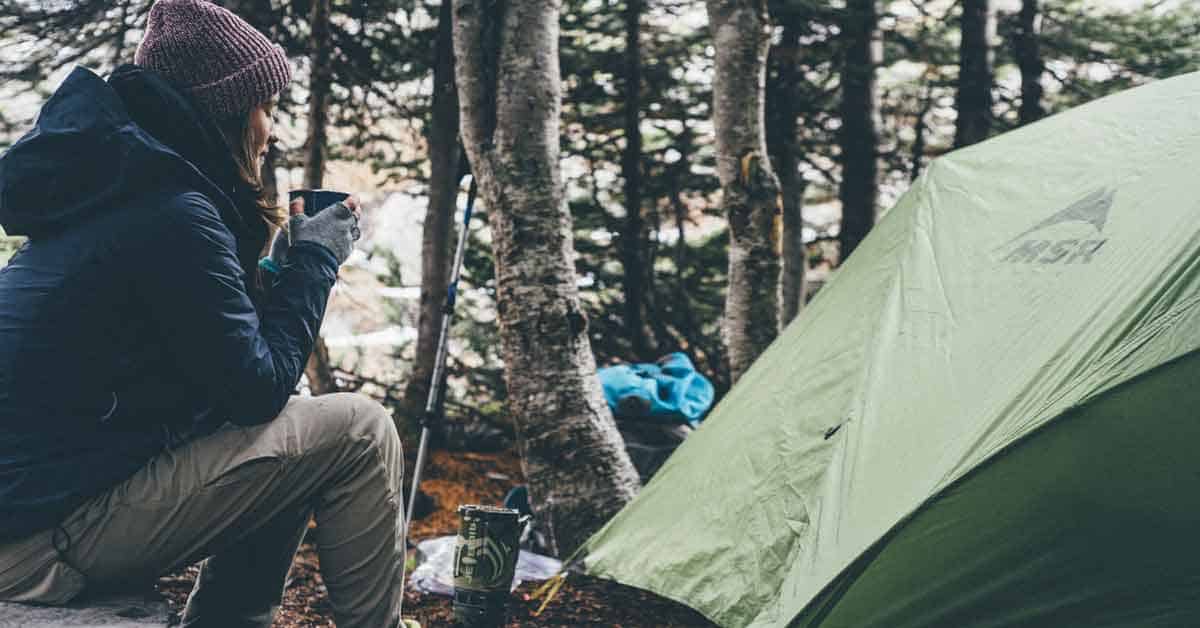
When camping in cold weather, it can be difficult to stay warm. While some tents are designed to keep you insulated from the elements, others may not provide enough warmth on their own. Fortunately, there are several alternatives that can help keep you comfortable and safe during your outdoor adventure.
Wear Extra Layers
One of the most effective ways to stay warm is by wearing extra layers of clothing.
Make sure you have a few lightweight items such as long underwear or thermal tops and bottoms that will fit comfortably under your regular clothes.
If you have to venture outside your tent on a cold night, wear a waterproof jacket over your layers for protection against rain, snow, or wind and consider investing in a great pair of insulated winter boots to keep your feet warm.
Hot Water Bottles
Another way to add heat in your tent is by using hot water bottles filled with boiling water before bedtime.
Put a hot bottle of water or an old-fashioned hot water bottle in your sleeping bag for warmth. Placing your hot water bottle between your legs or on your groin warms the blood flowing through your femoral artery. This will keep you warmer than placing the bottle at your feet.
When using a water bottle, make sure it’s made for hot liquids. Wide-mouth 32 fl. oz. Nalgene bottles are my top choice. The wide-mouth bottle is easier to fill with hot water and the lid is easier to get off when wearing gloves… Use these bottles during the day to keep hydrated and to stay warm in a tent at night.
Use caution when using a hot bottle of water, you don’t want to burn yourself. Make sure the lid is on tight and if the bottle is too hot, wrap it in one of your layers.
Sleeping Bags With Liners
Sleeping bags with liners are also great for providing additional warmth. The liner helps trap body heat while protecting the sleeping bag from dirt and moisture buildup which could reduce its effectiveness over time.
For more ways to stay warm in your tent, see these companion articles:
- How to Insulate a Tent for Winter Camping: A Comprehensive Guide
- 3-Season Vs 4-Season Tents: Which Is Best For You?
- Why Use Liquid Fuel Stoves For Winter Camping?
Conclusion
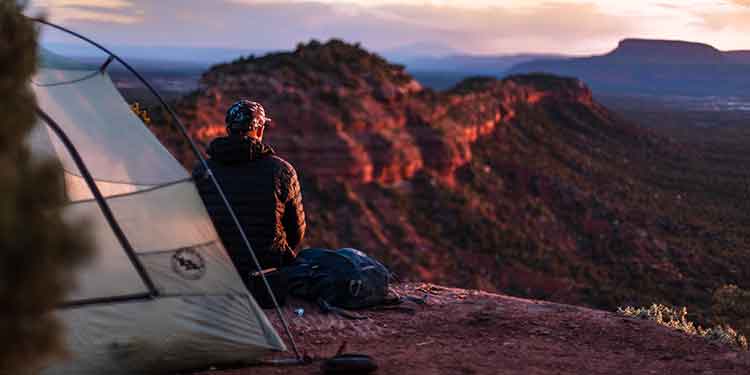
When it comes to heating for tents, there are a variety of options available. It is important to consider safety first when deciding which heat source is best for you and your tent.
Propane heaters, diesel heaters, electric heaters, electric blankets, wood-burning tent stoves, and even campfires can be used to safely heat your tent as long as proper precautions are taken.
Electric blankets and heated stones can also provide warmth without the risk of fire or carbon monoxide poisoning.
No matter what type of heating you choose for your tent, always make sure that you follow all instructions carefully and take necessary safety measures in order to ensure a safe and comfortable camping experience!
